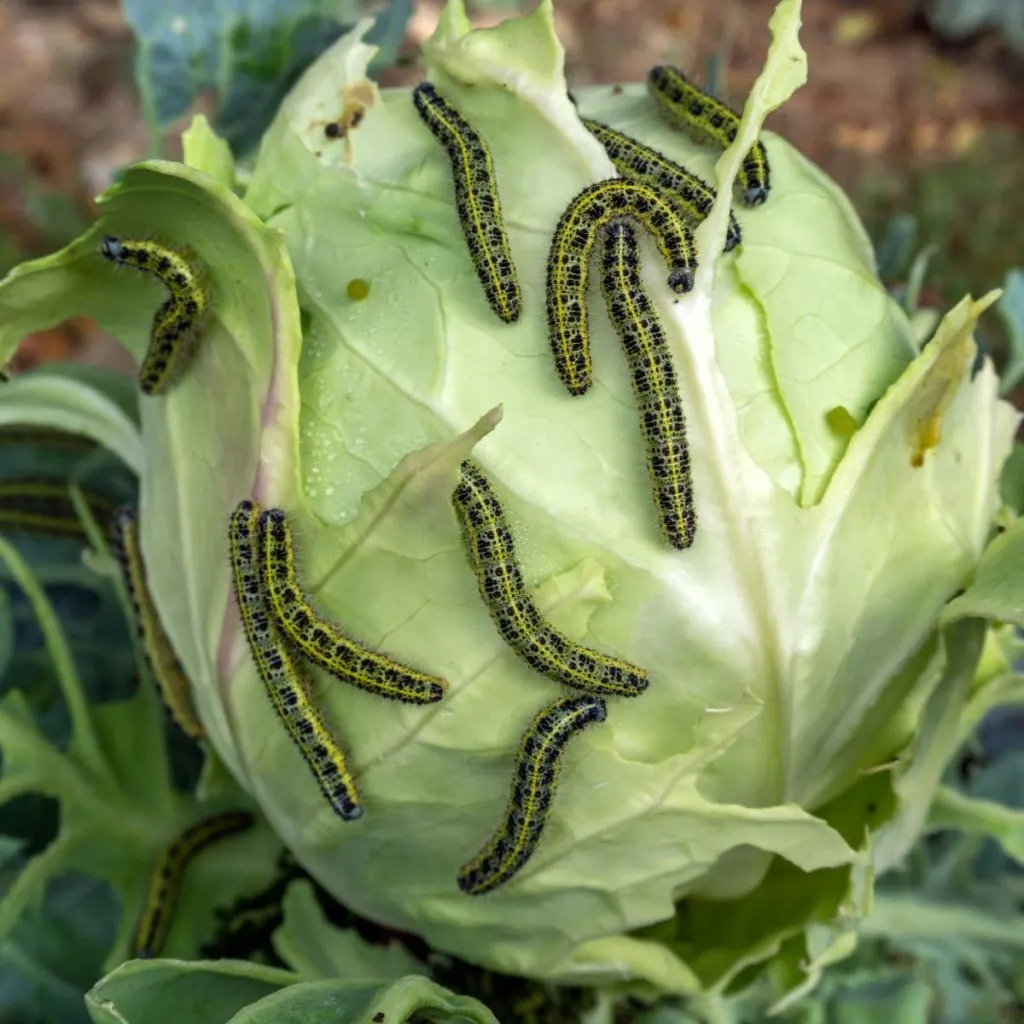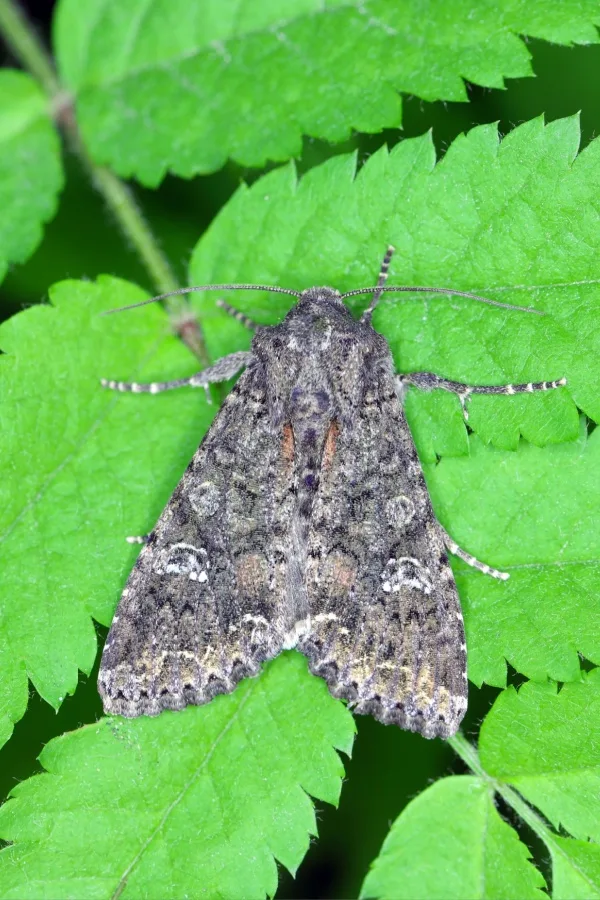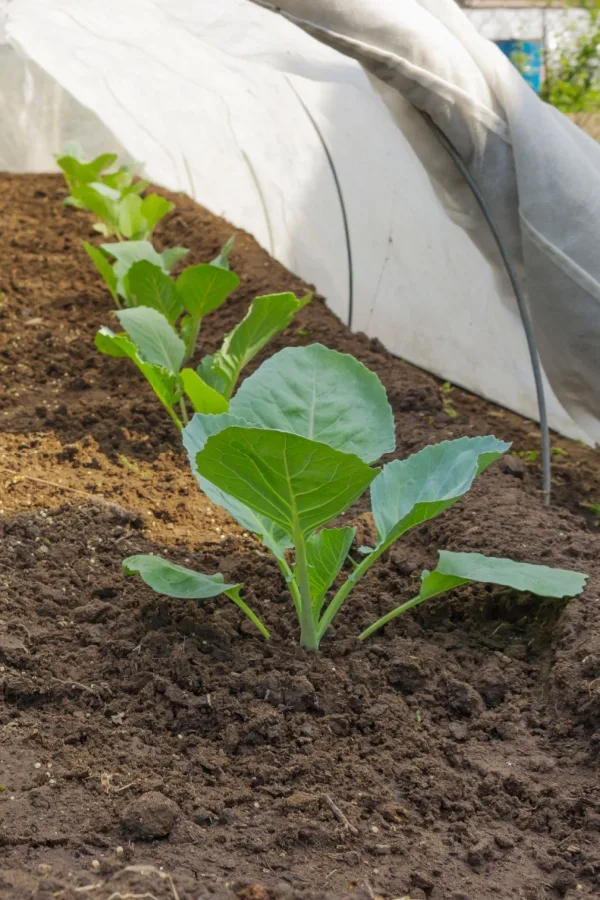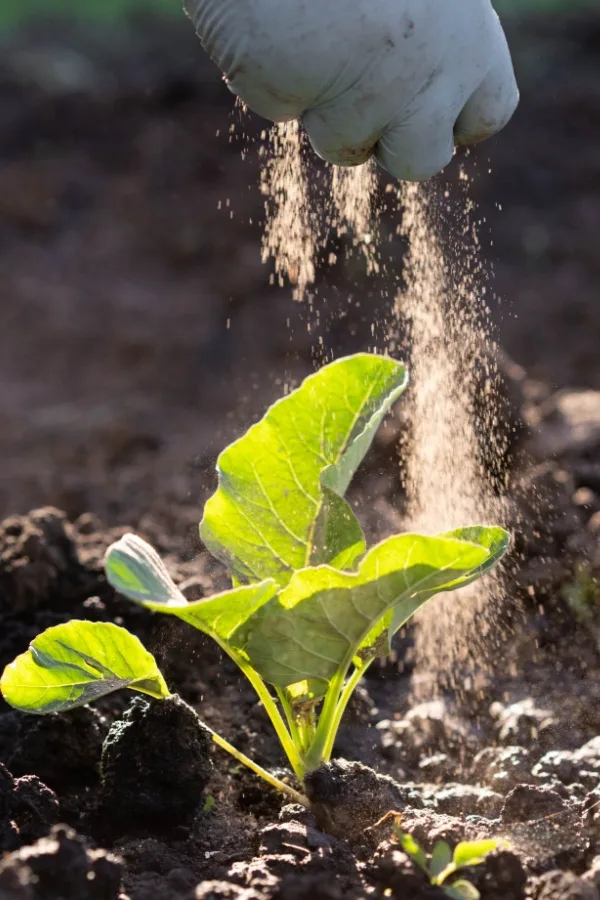Are you looking for a few safe and effective methods to stop cabbage worms from ruining your leafy garden crops?
Contrary to their name, cabbage worms can wreak havoc on all sorts of garden crops. Broccoli, cauliflower, spinach and other leafy greens are all easy targets for these tiny but very destructive pests.
Unfortunately, once cabbage worms start their damage, it doesn’t take long until the entire plant can be stripped clean of foliage. What starts as a few holes on leaves that looks like Swiss cheese can end up with the whole plant suffering damage – including the vegetables on them!

So how can you stop these pests and keep your garden safe? The first key to stopping cabbage worms is all about prevention – but if they do arrive in – you have to be ready to jump into action.
Thankfully, it’s a lot easier than you might think to stop cabbage worms from overtaking your leafy crops – and all without resorting to using harmful chemicals!
What Are Cabbage Worms
There are two different types of cabbage worms that people often confuse with one another. One is the larva form of cabbage moths. Cabbage moths have grayish-brown wings with dark brown blotches and wingspans. The moths and their larva are more active at night and hide on the bottom of leaves during the day.
The second type is the larva from cabbage white butterflies. You can see these butterflies during the daytime feeding on the nectar of flowers. They are creamy white to yellowish in color. These worms are often called “imported cabbage worms” or “cabbage white worms”.

The adult moths and butterflies don’t do much damage to the crops themselves. Instead, they focus on laying eggs on the bottom of leaves that eventually turn into hungry worms. Once the eggs hatch, the host plant makes for the perfect meal.
While they are completely different species, they both cause major destruction to cabbages and a wide range of greens. Thankfully, you can stop both of these cabbage worms using the same methods.
How To Spot Signs And Damage
Around late May and through June, you can often spot the presence of both the cabbage moth as well as the cabbage white butterfly flying around in your garden laying their eggs. After less than two weeks, those eggs hatch into cabbage worms.
Cabbage worms immediately start to chow down on their host plants, so the key is to try to spot signs of the worms or flying insects early. Walk your garden daily and check the bottom of the leaves. If you are lucky, you can find and remove the white to yellowish eggs before they even get a chance to hatch.

You can also look for signs of moth and butterfly droppings. If you spot small yellow, green, or brown colored lumps on your cabbage leaves, start looking for and removing the eggs that are likely nearby.
Once the larva has hatched, look for chewed holes in the leaves of plants. This Swiss-cheese like looking damage is a tell-tale sign of cabbage worms. Finding the infestation early will help prevent issues from getting out of hand. But if they do – there are still a few great solutions to get rid of them!
3 Easy Ways To Stop Cabbage Worms
Row Covers
One of the easiest and most effective ways to stop a cabbage worm infestation from the start is to use row covers. If the moth or butterfly doesn’t have access to the cabbage leaves or foliage, then it can’t lay their eggs there. No eggs on plants means you won’t have issues with cabbage worms – it’s as simple as that!
The key is to get the row covers in place early in the spring, immediately following planting. Even a few days missed can provide the moths or butterflies the opportunity to lay their eggs. Remove the covers once the threat of moths has passed (usually by early to mid-July).

You can find row covers in all sorts of sizes and shapes. You can even cut most row covers to fit your particular garden layout. These lightweight cloths are perfect for keeping out pests of all kinds while still allowing sunlight and rain to get to plants. Product Link: Agfabric Plant Floating Row Covers
What’s great with row covers is that you can keep and reuse the covers from year to year. You can also use them to help prevent early frost damage as well.
Neem Oil – How To Stop Cabbage Worms
Neem oil is one of the best natural pesticides on the market today. Not only is it 100% organic, but it is also safe for pollinators when used correctly. Neem oil works to target cabbage worms, killing them and their larva.
Create a simple spray using one ounce of concentrated neem oil for every gallon of water. Mix well with a few drops of biodegradable dish soap and add to a handheld sprayer. The soap will help the mixture stay on the foliage of plants.
Apply the neem oil spray to both the top and bottom of the plant’s leaves. To help prevent pollinators from becoming a victim, apply the spray late at night or early in the morning when they are less active. (See our article: “How To Use Neem Oil On Plants”)
Flour Dusting – How To Stop Cabbage Worms
Believe it or not, this pantry staple is a great way to stop cabbage worms from ruining your vegetable plants. Flour or cornmeal works to lightly coat plants in a thin dust.

The cabbage worms actually like and consume the flour or cornmeal, which happens to be fatal to them. The good news is that the flour and cornmeal are completely safe for not only your plants but for you and your pets as well.
When you use flour, reapply it anytime it gets wet or washed off. As soon as the flour gets wet, it will no longer work as well to kill the worms.
When all else fails, taking the time to hand-pick the worms off of your plants can do wonders to keep an infestation in check. Just remember to check early and check often. (If you have chickens, the worms make for an excellent free snack!)
Here’s to stopping cabbage worms from taking over your vegetable garden this year!
Simple Garden Life
Follow Our Facebook Page For Even More Great Tips! Simple Garden Life Facebook Page
Simple Garden Life is a website dedicated to keeping gardening fun, simple and enjoyable! We publish two new articles each week along with a new garden podcast episode every two weeks. This article may contain affiliate links.
